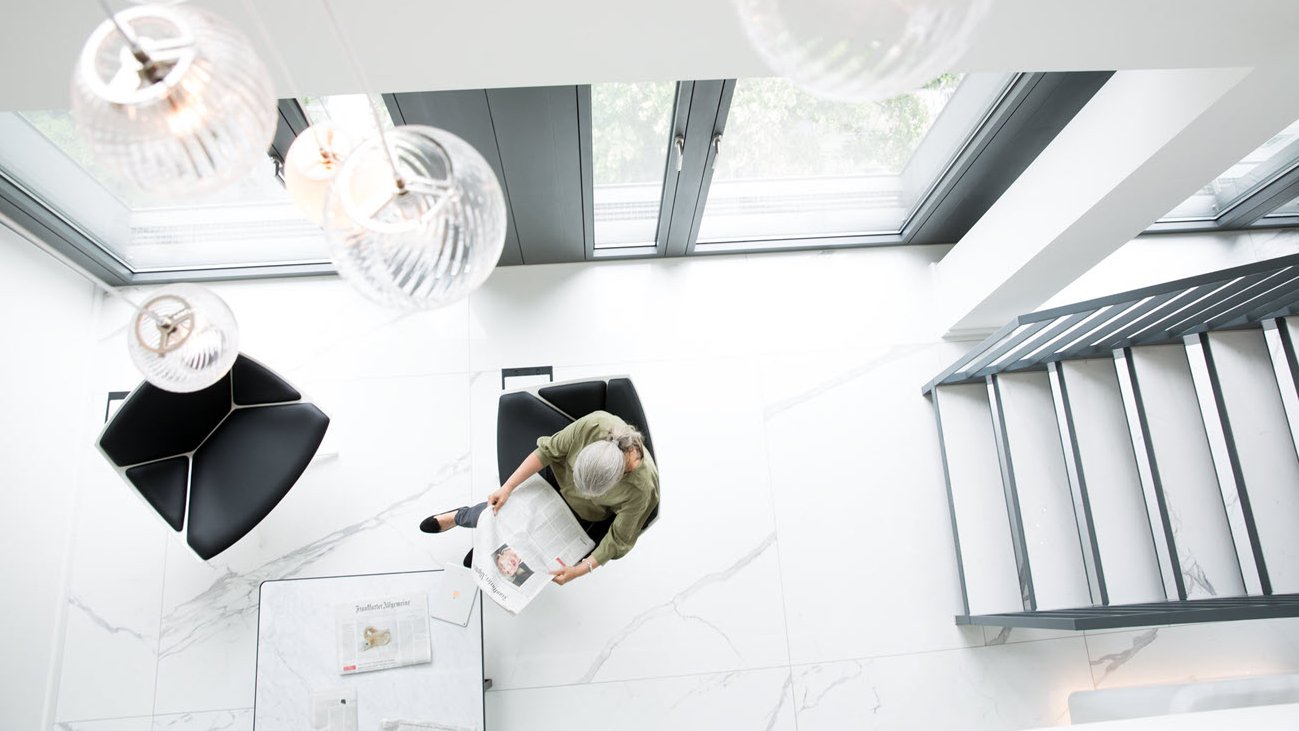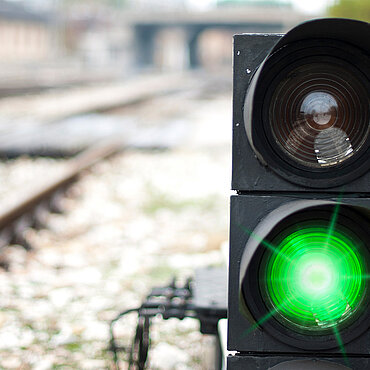Copyright: Advertising with Art
Someone who advertises often uses pictures or objects which were created by other people. Not as the main product of course, but in the background, as decoration, backdrop, accessory. If copyright-protected works are used, this is problematic. Instinctively, one realizes that. But the exact boundary is not even easy to determine for lawyers. The German Federal Supreme Court has now done this in an illustrative case.
Facts of the Case
A furniture company uses the picture of an artist in a photograph which shows a room equipped with furniture, as pictured here.
The artist took legal action. He requested injunctive relief and information about the extent of the use in order to be able to subsequently claim damages. The furniture company referred to Sec. 57 Act on Copyright and Related Rights (Gesetz über Urheberrecht und verwandte Schutzrechte, UrhG). Accordingly, amongst others, the copying, distribution and public reproduction of works is admissible if they are to be regarded as non-essential accessories next to the actual object of the copying, distribution or public reproduction. The question therefore is whether the picture could be regarded as a “non-essential accessory”.
The lower instance courts answered in the affirmative. In order to determine what would constitute an “accessory”, one would have to clarify what is the main work: The photograph, therein claimant’s picture in addition to defendant’s furniture, or the catalogue and the website, there the photograph etc. The Higher Regional Court Cologne decided on the latter. In the catalogue and on the website, the picture could be readily replaced, would be mere accessory, so the court rejected the artist’s claim.
The German Federal Supreme Court (BGH) took a different stance. The author in himself is solely and comprehensively entitled to use his works. Sec. 57 UrhG limits his entitlement in this regard and with that constitutes an exception. Therefore, the provision would have to be interpreted in a narrow sense. Narrow or broad, both are not helpful in the matter. The BGH stated that one would have to ask if and, if any, which contextual references would be made between the picture and its surroundings from the viewpoint of the normal observer, i.e. whether the picture would disappear in the catalogue or play a role in the photograph, even if a subordinate one. From this perspective, it follows that the picture has nothing to do with the catalogue, but does play a role in the concrete photograph due to its size and colouring. One would also have to take the law at its word which requests a double insignificance, namely an “accessory” which in addition is “non-essential”. It would not suffice that on the photograph - of course - the furniture would be the essential and the picture relatively non-essential in this regard.
Information for the practice
Mail order companies and online shops make a great effort to present their products in an appealing manner. If third-party works are used for illustration purposes in the background, such as paintings, photographs or sculptures, as a matter of precaution, the consent of the third party author should always be obtained - according to the judgment of the Federal Supreme Court. Otherwise, there is a risk of claims for injunctive relief and damages, even years later.
(BGH, judgment of 17 November 2014 - I ZR 177/13)
Dr Kristofer Bott, Attorney (Frankfurt)

Subscribe to our GvW Newsletter here - and we will keep you informed about the latest legal developments!




